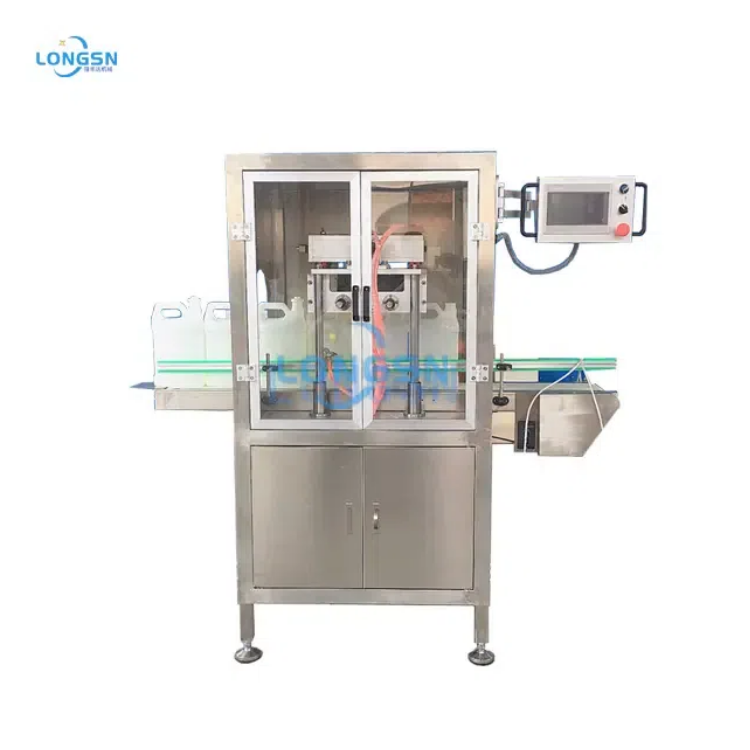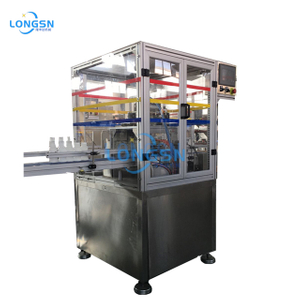Clear, precise neck finishing is essential to reliable capping and minimizing product loss in packaging lines. A Bottle Neck Cutting Machine plays a central role in ensuring that bottles are trimmed and finished perfectly so that every seal is secure and every product shipment meets quality standards. Zhangjiagang Longsn Machine Co., Ltd., as a leading manufacturer of bottle packaging equipment, provides advanced servo rotary Bottle Neck Cutting Machines that streamline trimming, enhance consistency, and support downstream leak testing and packing processes. This article explores how these machines function, why neck geometry matters, and how their integration with leak testing ensures leak-free seals.
What a Bottle Neck Cutting Machine Actually Does
A Bottle Neck Cutting Machine is designed to precisely trim and finish the neck of bottles after molding. By removing excess material, flash, or irregular edges, it prepares the bottle for optimal sealing. This process is crucial because even minor imperfections at the neck can compromise cap engagement, increase leakage risk, and reduce shelf life.
Understanding Deburring, Trimming, and Finishing
The neck trimming process may involve three related steps, each with a distinct purpose:
Deburring removes rough edges or flashes left over from molding, preventing scratches or defects on sealing surfaces.
Trimming reduces the neck to the correct height, ensuring consistency across all bottles and proper fit with caps.
Finishing smooths the surface and ensures uniform flatness and concentricity, key factors in leak prevention.
A Bottle Neck Cutting Machine typically combines these operations, delivering high precision with minimal manual intervention.
Typical Machine Footprints: Rotary vs. Inline
Modern trimming machines come in different layouts depending on production requirements:
Rotary Machines use indexed tables that allow multiple bottles to be processed simultaneously, offering high throughput and excellent repeatability. These machines are ideal for large-scale production.
Inline Machines process bottles sequentially on a conveyor, providing a simpler setup that integrates easily with existing lines, suitable for moderate-speed production.
Both configurations can be equipped with servo motors and advanced controls to maintain trimming accuracy and reduce variability.
How Neck Geometry Affects Cap Sealing and Leak Risk
The geometry of the bottle neck directly impacts the ability of caps to form a tight seal. Proper neck trimming ensures uniformity, which minimizes leak potential during handling, storage, and transport.
Seal Surface, Concentricity, and Flatness Explained
Three critical aspects of neck geometry affect seal integrity:
Seal Surface Quality: Smooth, uniform surfaces prevent gaps and ensure even compression when caps are applied.
Concentricity: The neck must be perfectly centered relative to the bottle body to avoid uneven torque and leakage.
Flatness: Any tilt or irregularity at the sealing plane compromises contact with the cap, increasing leakage risk.
By maintaining these parameters within tight tolerances, Bottle Neck Cutting Machines create a reliable base for consistent capping.
Real-Life Examples of Failed Seals
Even small defects in the neck can have significant consequences:
A neck with uneven flash can create gaps under the cap, leading to dripping or pressure loss.
Tilted or non-concentric necks can result in skewed caps that do not engage threads correctly.
Inconsistent flatness may allow gas or liquid to escape in carbonated or high-pressure bottles.
Such issues emphasize the importance of precise trimming to protect product integrity and reduce rejects.
From Trimming to Leak Detection: The Process Flow
After trimming, bottles typically pass through a series of steps to verify sealing quality. Integrating the Bottle Neck Cutting Machine with downstream leak testing ensures a seamless quality control chain.
Typical Line Sequence
A common production sequence includes:
Blow Molding: Bottles are formed with their initial neck geometry.
Trimming: Excess material is removed, and the neck is finished.
Leak Testing: Bottles are inspected for leaks before filling or packaging.
Packing: Bottles are capped and prepared for shipment.
This flow ensures that any neck imperfections are corrected before filling, reducing waste and avoiding costly recalls.
Common Leak-Test Types Used With Trimming Lines
Several leak detection methods are commonly employed alongside trimming machines:
Pressure Decay Testing: Pressurizes the bottle and monitors for pressure loss.
Turntable Vacuum Testing: Submerges bottles or applies vacuum to detect leaks.
Automated Leak Testers: Integrated with the trimming line, these testers reduce manual inspection and maintain high throughput.
By coupling precise trimming with reliable leak testing, manufacturers can achieve near-zero leakage rates, enhancing product quality and consumer confidence.

Why Servo Rotary Bottle Neck Cutting Machines Improve Consistency
Servo rotary Bottle Neck Cutting Machines offer several advantages over conventional systems. Their design emphasizes precision, repeatability, and operational efficiency.
Servo Control, Rotary Indexing, and Repeatability
Servo motors allow precise control of blade position, speed, and cutting force. When combined with rotary indexing tables:
Each bottle receives identical trimming treatment.
Variability between bottles is minimized.
Critical parameters such as neck height, flatness, and concentricity remain consistent even at high speeds.
This high repeatability is particularly valuable for automated capping and leak detection, where small deviations can translate to leaks.
Throughput Gains and Reduced Rejects
The integration of servo control and rotary design translates into tangible operational benefits:
Higher Throughput: Multiple bottles are trimmed simultaneously, reducing cycle times.
Lower Reject Rates: Consistent neck geometry decreases the risk of capping errors and leaks.
Optimized Efficiency: Automated processes reduce manual intervention and downtime.
These features position servo rotary machines as a reliable solution for manufacturers aiming to improve productivity without sacrificing quality.
How to Verify Trimming Quality on Your Line
To ensure the Bottle Neck Cutting Machine is delivering leak-free bottles, certain KPIs and inspection methods are commonly used.
Key Measurements
Some of the critical parameters to monitor include:
O-Rim Flatness: Confirms uniform contact surfaces for sealing.
Cap Torque Spread: Measures consistency in capping force applied across bottles.
Leakage Rate: Evaluates overall seal integrity after trimming and capping.
Monitoring these indicators helps manufacturers maintain high quality and quickly identify process deviations.
Sampling Plan and Integrated Leak Testers
Regular sampling and inspection complement automated trimming:
Sampling Plan: Periodic checks on a representative batch ensure ongoing compliance.
Integrated Leak Testers: Inline testing reduces inspection workload and provides immediate feedback for corrective actions, minimizing waste and maintaining line efficiency.
By combining precise trimming with real-time quality control, the overall reliability of the packaging line is greatly enhanced.
Conclusion
A Bottle Neck Cutting Machine is a crucial component in the bottle production process, enabling precise neck finishing that directly impacts seal quality and leak prevention. Zhangjiagang Longsn Machine Co., Ltd. provides advanced servo rotary machines that ensure consistent trimming, streamline integration with leak testers, and improve line throughput. By investing in high-precision neck cutting equipment, manufacturers can achieve reliable capping, reduce rejects, and maintain product integrity from the production line to the end consumer. For more information or to request a demo/spec sheet of our Bottle Neck Cutting Machine, please contact us today.

 English
English










